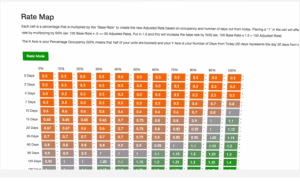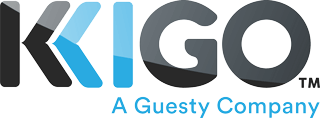Revenue Management: Applying it to your Business Today
Taking Revenue Management From Theory into Practice
In the recent weeks, we have devoted a lot of time to discussing the basic principles of revenue management, understanding how it works. In this edition of the blog, we’re going to give you real examples of how you can apply this to your actual business, including an actual revenue management model that can be applied throughout the year to your properties.

For the purpose of this exercise, we’re going to divide the year into two seasons: low and high. As well as this, we will use two theoretical rate maps: aggressive and modest. This distinction separates the maps that use a pricing structure that raises the property price per night to a higher rate more rapidly from a more gradual increase. The modest rate map has a more steady price increase and is built to drive occupancy of nights that would go otherwise unbooked.
The seasons are generally defined as the periods of high and low demand within the year. If we assume the low season to be between October and March and the high season to be between April and September this divides the year into two periods of six months. It may be that this does not match your actual low and high seasons, but the same model can be applied to different months.
The aggressive rate map will have a higher percentage increase of your base price as demand increases. It will also keep your base price set for longer if there are periods of lower demand. This map is designed to maximise the revenue you will receive from your most popular times whilst still enjoying complete calendars. With an aggressive rate map, your prices will rise as your occupancy rate starts to grow.
For example, if your base nightly rate is $100 this rate map may increase the rate to $120 once your properties reach 20% occupancy for more than three months in advance. This could then increase further as the occupancy rises, to a 30% increase should your occupancy rate reach 40%, meaning your price for the remaining 60% of your nights would be $130. Should your property reach 90% occupancy more than three months in advance, the system would then be able to increase the price to a much higher amount than the original base price of $100. Due to the clear high demand of the property it is likely that there will still be customers ready to pay this higher price. The aggressive rate map is more suited for the very highest demand of your peak season.

The modest rate map then operates on the same principle but is more attuned to driving occupancy in periods of lower demand. These rate changes are generally done less far in advance that the changes of the aggressive rate map. The rate is lowered if the occupancy is less than average. The goal of this map is to drive occupancy via lower prices and is better utilized in the low season. This rate map would start to lower the rate in 10% increments depending on the level of occupancy. For example, should your properties only have a 50% occupancy rate for the upcoming three months then it would reduce your rate, lowering it further for the unbooked dates that are coming up first. The modest rate map will reduce your base price to 50% of the original if your properties remain unbooked with less than a week to go. This is built to increase overall occupancy and increase the revenue from every property, even if it seems like you are losing money from your regular rate. The revenue that this map drives should be considered as revenue that would otherwise be $0, as the nights would go unbooked.
These are the different parameters that can be set. In more complex revenue management such as Kigo’s automated system, you have a wider range of variables to choose from, changing your rate map every day if you require. What the Kigo system will do you for you is apply these variable rates to every property, across every portal, updating them automatically. As well as this, you will have more options to modify and personalise the pricing pattern you require. Kigo Revenue Management understands the current demand of your vacation rentals and uses an algorithm designed for the vacation rental industry to generate the most revenue without reducing demand. You simply set it and it analyses a wide range of data and uses a defined algorithm to convert this information into the most appealing and profitable prices for each property.
Revenue management is a simple idea that even the smallest business can apply. However, the logistics of measuring and updating the prices across all of your properties and portals can be a full-time job. Our revenue management system is built and tested to pick the right prices every single time, and take all of the work out of price setting and market research for you.







